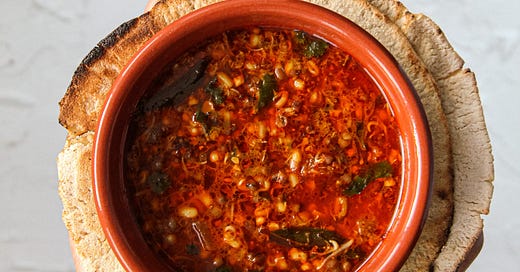I am a digital project manager by profession, but my life constantly revolves around my other passion - food. I spend a fair bit of time cooking, developing recipes, and creating content to spread my love of the food I grew up with in India. 17 years ago, when I came to this country, the British food scene was quite different to the way it is now. I struggled to find the pulses and vegetables on supermarket shelves that are part of my staple diet. Even some basic ingredients needed for Indian cooking like chickpea flour aka besan and spicy green chillies were hard to come by. Finding fresh fenugreek, bitter gourd and tender baby aubergines (for making that stuffed aubergine dish Maharashtrian’s call ‘bharli vangi), was a wild goose chase in the part of Surrey I was in.
Necessity is the mother of invention though my own necessity was to avoid reinventing anything at all. All I wanted was 'real' Indian food; the food that my Maharashtrian roots pampered me with throughout my youth, the food my ancestors cooked and the food that never made it onto the menus of the so-called ‘Indian’ curry houses in Britain. That was the day I realised I had to take matters into my own hands. I decided to re-create the food I enjoyed as a first-generation migrant at my home away from home in Britain. Anything I craved would have to be cooked in my own kitchen using ingredients I could source locally. And I haven’t looked back since.
Britain has come a long way towards fully appreciating real Indian food. But I have to say it has a long way to go. An appetite for regional Indian food is still lacking. Indian food is not just about chicken tikka masala, onion bhaji or tadka dal. Notice I don’t spell it ‘tarka’ or even more annoyingly ‘tharka’. Some of these popular dishes are not even Indian.
Our British food industry needs education to understand the finer points of Indian cuisine. We are missing out on all the gems of regional Indian cuisine. How many Brits know about moth bean curry, for example, which is a super delicious protein-rich meal in itself? Such dishes don’t have to be drenched in fat or highly processed. They can be cooked in under 30 minutes and who doesn’t like eating healthy and tasty food that can be put together in a jiffy?
As such these dishes represent a great opportunity to push back the deluge of ultra-processed ready meals that we face every time we visit a supermarket these days. Part of the reason I’m so passionate about the food I grew up with is that it’s inherently nutritious and sustainable. It doesn’t break the bank. And of course, it’s utterly delicious.
Reach out to me if you’re looking to solve a problem involving food and sustainability.
I offer consultancy, training and advice if your food business is facing challenges around authenticity, cultural appropriation and sustainability. And if you are looking for healthy regional food from India you may want to visit Zanzaneet kitchen where I document my recipes and culinary wisdom. I don’t just talk about food though; if you find my ramblings intriguing check out my Substack.
Here’s my recipe for the said moth bean ‘usal’ curry aka मटकीची उसळ



